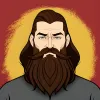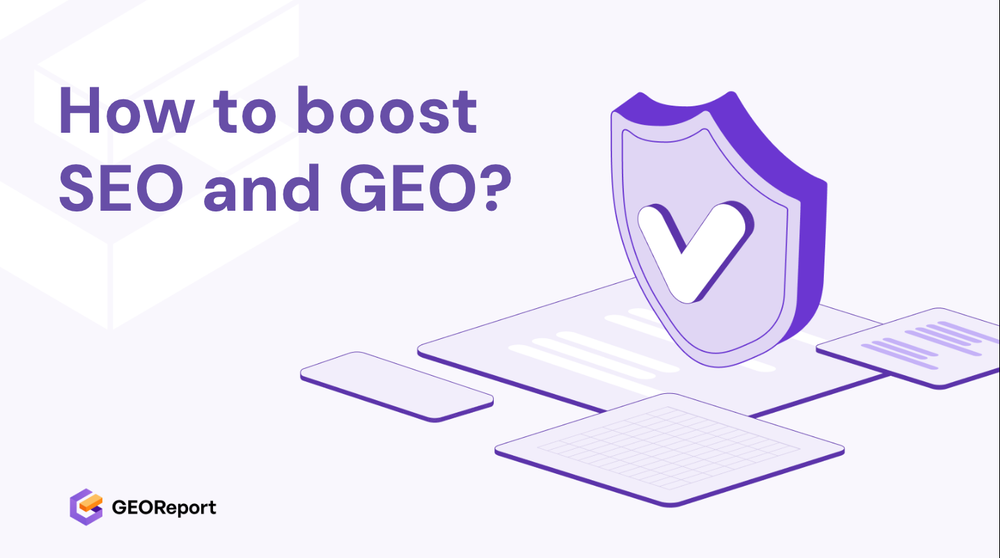BLUF: Brands should balance SEO and GEO in their content strategy by integrating local signals into their broader SEO efforts, optimizing content for both traditional search engines and generative AI to enhance overall online visibility.
Why Does Balancing SEO and GEO Matter for Content Strategy and AI Visibility?
Balancing Search Engine Optimization (SEO) and Generative Engine Optimization (GEO) in your content strategy matters because it ensures your content is discoverable across both traditional search engines and emerging AI-driven platforms. In today’s digital landscape, relying solely on traditional SEO methods limits your reach. GEO focuses on optimizing content for AI models like large language models (LLMs) that generate responses and summaries, which are increasingly influencing user search behavior.
- Enhanced Discoverability: Integrating GEO into your content strategy ensures that your brand’s information is readily available and accurately presented in AI-generated responses, summaries, and recommendations. This dual optimization approach maximizes visibility, attracting a broader audience.
- Improved User Experience: By optimizing for both SEO and GEO, you provide users with comprehensive and relevant information regardless of how they search. This enhances their overall experience with your brand, fostering trust and engagement.
- Competitive Advantage: Brands that proactively adapt to GEO gain a competitive edge by becoming more visible and authoritative in AI-driven search results. This proactive approach helps them stay ahead of the curve as AI continues to evolve.
According to a report by Gartner, by 2025, AI will influence 75% of all customer service interactions. This statistic underscores the importance of optimizing content for AI to ensure businesses remain relevant and accessible to their target audiences.
Why do brands struggle to balance SEO and GEO effectively?
The biggest mistake brands make is treating SEO and GEO as separate entities rather than integrating them into a unified content strategy. Many businesses focus solely on traditional SEO tactics, such as keyword optimization and backlink building, without considering how their content performs in AI-driven environments.

- Siloed Strategies: When SEO and GEO are managed by different teams or viewed as distinct activities, it leads to inconsistencies in messaging and optimization efforts. This fragmentation reduces the overall effectiveness of the content strategy.
- Ignoring AI Relevance: Brands often overlook the importance of optimizing content for AI models, resulting in content that is not easily understood or accurately summarized by LLMs. This oversight limits their visibility in AI-driven search results.
- Lack of Testing and Adaptation: Many brands fail to continuously test and adapt their content strategy based on how it performs in both traditional search engines and AI platforms. This lack of agility prevents them from optimizing their content for maximum impact.
While most companies track keyword rankings and website traffic, few actively monitor how their content is being used and referenced by AI models. This oversight prevents them from understanding the true impact of their content strategy on AI-driven search.
How Do Brands Build a Strategy That Works for Both SEO and GEO?
To implement a balanced SEO and GEO strategy, brands should integrate local signals into their broader SEO efforts and optimize content for both traditional search engines and generative AI.
- Keyword Research and Optimization:
- Traditional SEO: Conduct keyword research to identify relevant search terms with high search volume and low competition.
- GEO: Identify key phrases and questions that users ask when seeking information from AI models. Focus on long-tail keywords and natural language queries.
- Tools: Use tools like Google Keyword Planner, Semrush, and Ahrefs for keyword research.
- Content Creation and Optimization:
- Traditional SEO: Create high-quality, informative content that targets your chosen keywords. Optimize title tags, meta descriptions, and header tags.
- GEO: Develop content that answers common questions, provides clear explanations, and offers valuable insights. Use structured data and schema markup to enhance AI readability.
- Tools: Utilize content management systems (CMS) like WordPress, Drupal, or Joomla, along with SEO plugins like Yoast SEO or Rank Math.
- Local SEO:
- Traditional SEO: Optimize your Google My Business profile, build local citations, and encourage customer reviews.
- GEO: Ensure your business information is accurate and consistent across all online platforms. Create content that highlights your local expertise and community involvement.
- Tools: Use tools like BrightLocal, Moz Local, and Yext to manage your local listings and monitor your online reputation.
- Link Building:
- Traditional SEO: Build high-quality backlinks from authoritative websites in your industry.
- GEO: Focus on earning citations and mentions from trusted sources, including industry publications, news outlets, and educational institutions.
- Tools: Use tools like Ahrefs, Semrush, and Majestic to analyze your backlink profile and identify link-building opportunities.
- E-E-A-T Building:
- Traditional SEO: Showcase your expertise and authority by creating in-depth content, participating in industry discussions, and earning credentials.
- GEO: Emphasize your experience, expertise, authoritativeness, and trustworthiness in your content. Provide clear contact information, cite credible sources, and display customer testimonials.
- Tools: Use tools like Surfer SEO to improve E-E-A-T signals on your website.
- Performance Monitoring and Analysis:
- Traditional SEO: Track your keyword rankings, website traffic, and conversion rates using Google Analytics and Google Search Console.
- GEO: Monitor how your content is being used and referenced by AI models. Track brand mentions, sentiment analysis, and AI-driven traffic.
- Tools: Utilize GEOReport.ai to monitor AI visibility and identify opportunities for improvement.
By implementing these strategies and tools, brands can effectively balance SEO and GEO in their content strategy, maximizing their online visibility and attracting a broader audience.
How Can GEO Report Help You Balance SEO and GEO?
GEO Report is purpose-built for Generative Engine Optimization (GEO). We focus on AI visibility—how your brand is surfaced, cited, and trusted by engines such as ChatGPT, Gemini, Claude, and Perplexity.

- GEO-First Capabilities: We evaluate AI visibility using GEO scoring across core dimensions: intent alignment, structured data readiness, readability, and AI citation readiness. This reveals where and how AI systems are likely to surface and attribute your content.
- Unified View for Decision-Making: A side-by-side view of GEO scores and selected SEO indicators helps you identify conflicts (e.g., long articles ranking well but underperforming in AI answers) and opportunities (e.g., adding FAQ/ How To patterns to improve both SERP and AI citations).
- Actionable, GEO-Led Roadmap: We deliver a prioritized plan that distinguishes GEO-priority actions (improving answerability, schema coverage, AI-citation readiness) from SEO-collaboration actions you may route to your in-house team or agency. The goal is to advance GEO without undermining your SEO baseline.
- Measurement of AI Visibility: We emphasize AI-specific outcomes—such as answer inclusion, citation presence, and consistency of brand references across leading models—while your SEO tools remain the source of truth for rankings and organic traffic.
By combining these dimensions, GEO Report provides organizations with a structured methodology to avoid trade-offs between SEO and GEO.
What Are the Key GEO Trends to Watch in 2025 and Beyond?
Several future trends are poised to shape Generative Engine Optimization (GEO) in 2025 and beyond.
- AI-Driven Content Creation: AI tools will increasingly be used to generate content, requiring brands to focus on ensuring the quality, accuracy, and originality of AI-generated material.
- Personalized AI Experiences: AI models will become more sophisticated in delivering personalized experiences, necessitating content strategies that cater to individual user preferences and needs.
- Voice Search Optimization: With the growing popularity of voice assistants, optimizing content for voice search will become even more critical. Brands will need to focus on natural language queries and conversational content.
- AI-Powered SEO Tools: AI-powered SEO tools will provide more advanced insights into search trends and user behavior, enabling brands to make more informed decisions about their content strategy.
While many experts predict that AI will dominate search, a contrarian view suggests that human-generated content will remain valuable, particularly content that demonstrates creativity, emotion, and unique perspectives. Brands that strike a balance between AI-generated and human-generated content will likely achieve the greatest success.
FAQs:
What Is GEO vs. SEO?
GEO (Generative Engine Optimization) focuses on optimizing content for AI models, such as large language models (LLMs), to ensure accurate and prominent visibility in AI-driven search results. SEO (Search Engine Optimization) focuses on optimizing content for traditional search engines like Google, Bing, and Yahoo. GEO aims to improve AI's understanding and presentation of your brand, while SEO aims to improve your website's ranking in search engine results pages (SERPs).
Which LLMs Matter Most for AI Visibility?
The LLMs that matter most for AI visibility include:
- Google’s Gemini: Powers many of Google's AI-driven features and search functionalities.
- OpenAI’s GPT Models (e.g., GPT-4): Used in a wide range of applications, including content generation and chatbots.
- Meta’s Llama: An open-source model that can be customized for various tasks.
- Anthropic’s Claude: Known for its strong focus on safety and reliability.
These models influence how information is summarized, presented, and recommended to users, making them critical for GEO.
Can Small Teams Apply GEO Without Big Budgets?
Yes, small teams can apply GEO without big budgets by focusing on cost-effective strategies, such as:
- Prioritizing E-E-A-T: Building expertise and trustworthiness through high-quality content and transparent communication.
- Leveraging Free Tools: Utilizing free SEO tools like Google Analytics, Google Search Console, and Bing Webmaster Tools.
- Engaging in Community Building: Participating in online communities and forums to build brand awareness and authority.
- Creating Targeted Content: Focusing on specific niches and long-tail keywords to attract a highly engaged audience.
Why Is GEOReport.ai Different From Other Visibility Tools?
GEOReport.ai differs from other visibility tools by focusing specifically on AI-driven search and content optimization. It provides insights into how your content is being used and referenced by AI models, helping you identify opportunities to improve your AI visibility. This tool allows you to track brand mentions, sentiment analysis, and AI-driven traffic, offering a comprehensive view of your performance in AI-driven environments.
What Metrics Should I Track Monthly?
The key metrics to track monthly include:
- Website Traffic: Monitor overall website traffic, including traffic from AI-driven sources.
- Keyword Rankings: Track your keyword rankings in both traditional search engines and AI-driven search results.
- Brand Mentions: Monitor brand mentions across online platforms, including social media, news outlets, and industry publications.
- E-E-A-T Signals: Track E-E-A-T signals, such as domain authority, backlink profile, and customer reviews.
- Conversion Rates: Monitor conversion rates to assess the effectiveness of your content strategy in driving business outcomes.
- AI-Driven Traffic: Track the amount of traffic coming from AI-driven sources like featured snippets or AI-generated content.
By tracking these metrics, you can assess the performance of your SEO and GEO efforts and make data-driven decisions to optimize your content strategy.


